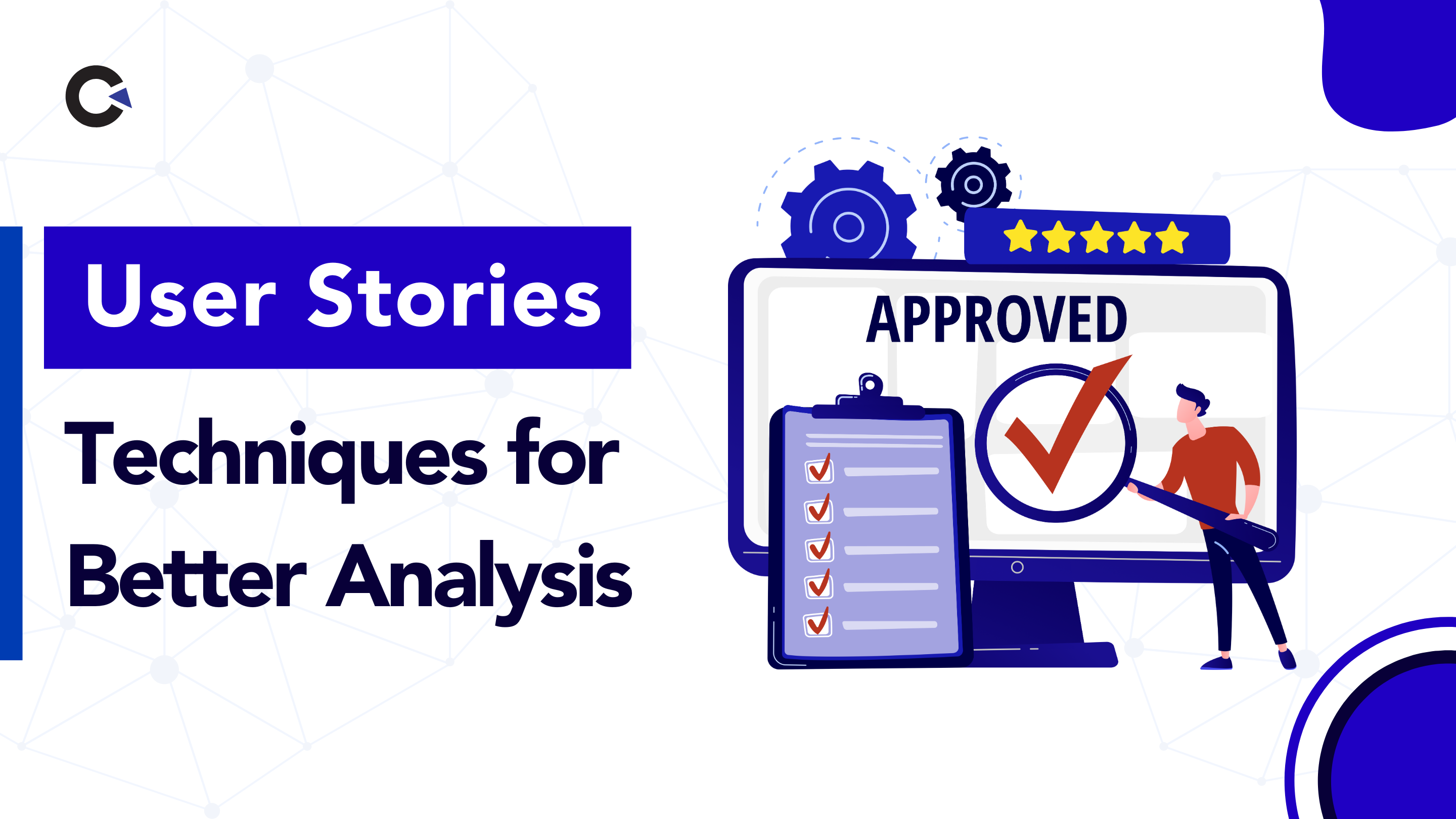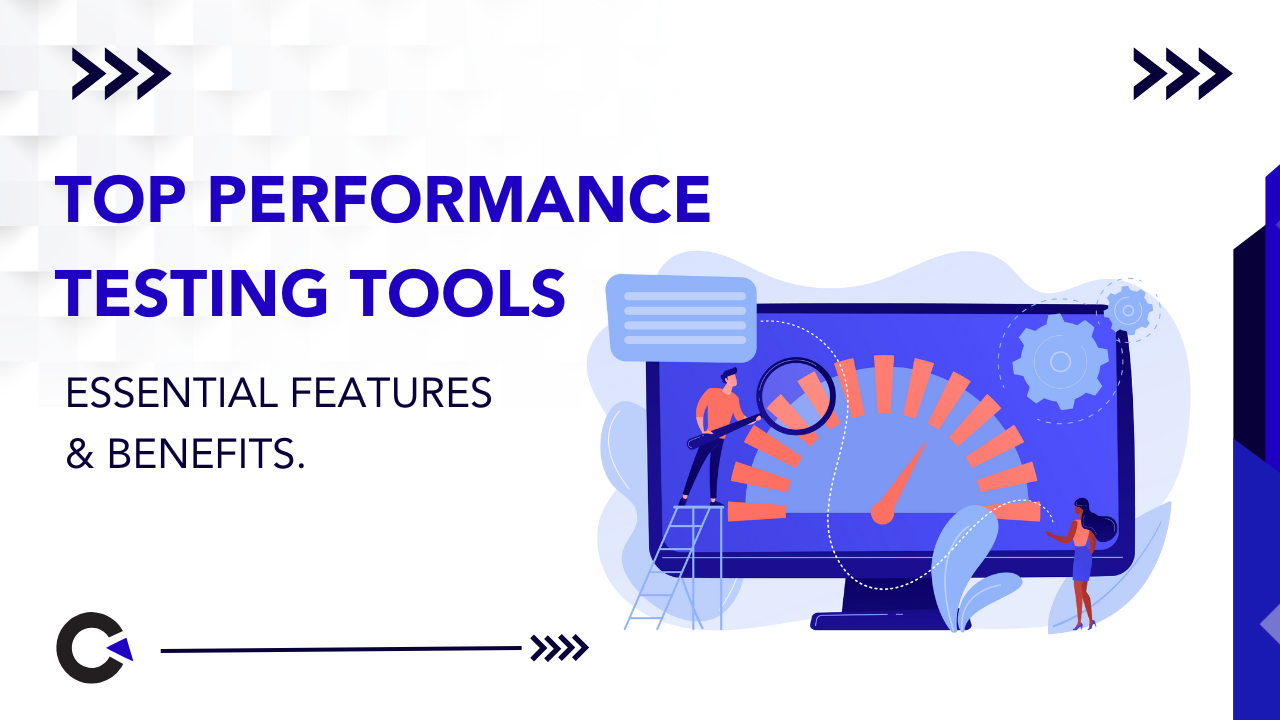
by admin | Dec 29, 2019 | Software Testing, Fixed, Blog |
Even though the concept of a self-organizing team has been propagated as part of the Agile drive, there is really no clear definition in the documentation of the best or even such a team. However, the underlying premise of such a team is that it would produce optimum results. As a leading Software Testing Services Company we understand the importance and benefit of such a company, and have made an attempt to put together an understanding of the critical self-organizing team.
From the name it seems simple to understand that such a team would work cohesively and towards meeting a predetermined mission and future vision. Such a team, while having a certain level of a decision making authority, would simultaneously have the onus of their working style and evolving a collaborative system of working. In the realm of software testing services, a self-organizing team would plan and strategize from the bottom up level, rather than the typical top down method. Such a team would have a system to determine and balance workload, ensure a proactive approach to work and problems, and ensure that all measures are geared towards achieving the objectives.
A self-organizing team operates differently to other teams – continuous improvement is the objective. As experts in the realm of QA, we understand the importance of teams that can function autonomously and yet produce the desired results. Our team is constantly organizing and evolving to manage their work, with the least amount of control and supervision. This in turn drives efficiency and optimum management of work since each member remains open to clear communication. A self-organizing team consistently enhances its skills, asks the right questions, and collaborates to get an increasing amount of work from existing and new clients. Additionally, members of such a team assign work amongst itself rather than waiting for the manager / supervisor to tell them what to do.
Each Agile team would have a different approach to organizing their work and would use the experience of all those in the team to move towards success, rather than depending on the knowledge of their manager. Such teams take complete ownership of their work and the possible problems and challenges. It seems a bit far-fetched that unrelated and disconnected individuals put together would be able to work cohesively and form a self-organizing team. However, that is the underlying premise of such a team – that the individuals comprising it would be carefully selected and would have a common goal. This selection process would be a critical responsibility of the management – proper deliberation, analysis of personalities and skills – to ensure proper group dynamics. We at Codoid use the following criteria to ensure that our teams are self-organizing in essence:
A team that consists of members from cross-disciplines and skills would be larger than wanted, but every skill required to take an idea to reality would be necessary. With time, however, some team members should and must develop a wider range of skills, allowing for other team members to move on to other teams / projects. This is a great way to utilize existing skills and grow the skills of each member.
A single team must never have members with the same level of technical expertise. It is important to balance the skill levels such that all the workload is properly divided. The skills of a highly experienced programmer for example, would be wasted on coding features with low impact, while a less skilled member would not be able to deal with the higher level complexities. Such a balanced mix would also be required when looking at those with domain knowledge.
While ensuring diversity would mean considering race, culture, gender, and skills, it also means putting together individuals who have varied yet innovative ways of thinking about and approaching problems and challenges. Team diversity would mean looking at individuals depending upon how much data they would require before arriving at effective and practical decisions.
Random members would take a lot of time before they start working collaboratively. When putting together an Agile team, it would make sense to put team members who would have worked together in previous projects. Additionally, matching communication styles and personalities would also help to quickly ensure cohesiveness and common purpose.
There is no doubt that putting together a self-organizing team in Agile is an extremely challenging task. It requires patience and time, and the expertise of a senior person to coach and facilitate all the factors mentioned to ensure a ‘well-oiled’ self-organizing team. The process of building and maintaining such a team therefore is ongoing – hence it would be better to align your business with an experienced vendor with a self-organizing team. Connect with us to gain all these advantages and more.

by admin | Jan 22, 2020 | Software Testing, Fixed, Blog |
Software testing companies should employ the fail-fast principle in their Software Development Lifecycle (SDLC) process because when your program fails, you can quickly fix the errors and promptly move to the next. Ideally, systems shouldn’t fail, and your application shouldn’t crash, but when it does, you should prevent frequent recurrences.
You are bound to err on the project, and the software will end up with a couple of bugs. System failures and software crashes are frequent, and deadlocks, data loss, privacy corruption, and inconsistency is particularly bad. The fail-fast principle prompts us to quickly fail early on in the process because if an error occurs, then it is easier to fix. It is better if the software fails immediately instead of later where you need to work around the failure. Since fail-safe makes errors appear earlier in the SDLC and bugs found are simpler to reproduce and cheaper to fix, it is an ideal situation to be in as it helps stabilize your software. Ensure there are fewer bugs and defects when it goes into production, therefore resulting in superior quality and launch-ready products. Fail-fast is a cost-effective method of application testing and a principle behind many agile practices.
Here are cases in software development when you need to employ fail-fast testing:
You write tests and cover all types of test case scenarios in which they may fail and highlight all the requirements that need to be met before implementation in a test-driven development method.
Developers are required to employ a method of continuous integration for current works with a shared repository, and it needs to be verified by automated builds to help the team to find and fix bugs early.
Instead of typically starting up the system or using the fall-back strategy if the system fails or stops due to missing environment variables and start-up parameters, you should be notified immediately to fix the issue.
Software theory usually prescribes one of two extremes to ensure quality. First is granting sole responsibility to an individual on the team; this removes accountability from the rest of the team. Second is the need to collaborate on everything that translates to follow the pack mentality. At Codoid, we suggest an alternate option, train, and educate all team members to become decision-makers on the project. Make sure this combined theory is put to the test by ensuring everyone is equally responsible for the outcome of the product quality. Let customers be empowered to make the right decision. Enunciate to your team the long-term consequences of their choices and explain how it affects user experience.
Providing software testing services can be hard for many companies. Yet, we are confident in our capability of predicting what may happen, and we take time to explain the possible outcome. We ensure that we get things done without having to give up the power of decision making. It is a risky gamble, but our work speaks for itself, take a look at our testimonials, and you’ll see we’re right.

by admin | Jan 21, 2020 | Software Testing, Fixed, Blog |
Teams can achieve quality by everyone on the team being skilled at testing by understanding what quality criteria in a product contribute to excellent quality. They should be a part of the testing process, and this is possible only if the entire team understands testing and uses tools to build the product. Your testers should perform exploratory testing to identify risks, analyze it, and then improve the quality throughout the Software Development Lifecycle (SDLC).
This type of complete team testing involves everyone responsible for its assessment who can contribute to the quality of the software. It is recommended that you employ different stakeholders at fixed intervals to make testing holistic and a team effort. There may be some pushback because testing may not be everyone’s primary job, but they can help to incorporate their knowledge and create a quality product.
Developers and testers usually waste a lot of time discussing, fixing, and retesting errors. To avoid this, the team should develop a mindset to acquire skills that will help them perform accurate testing. We can measure the various components of quality in SDLC by the quality of the product itself and the individual team member’s work quality. To achieve excellence using full team testing, you should establish processes and workflows to facilitate the collaboration of testing efforts within your team.
Full-team testing performs test design/execution together to improve the testability of the product. It is called a pairing for the testability session , and testers play the role of advocate here while also learning from developers about useful practices and details. Testers should write down a risk list applicable to each product and match it to developers accordingly for further development. It should be done before coding starts, especially for high-complexity issues, to refine the test coverage map created. For business-analytics reasons, you should track changes through a comprehensive test strategy. It is called a pairing for coverage session for the requirements, and a high-level outcome is expected. Testers should write automation, and other team members must be familiar so that they can add tests or fix broken ones. Testers should also identify what to automate and create an appropriate process flow around the ownership of automation efforts.
Quality Experience (QX) = Quality Assurance (QA) + User Experience (UX)
During the design phase, a frequent exchange between systems thinking and design thinking creates a quality experience. UX designers get product ideas based on user test case scenarios, and UX testers are faced with challenges based on their product insights, quality, and cross-functional dependencies. Developers then use statistical interaction-based information from the UX team to design a better scope for the tests.
In summary, full-team testing is when the entire team knows and participates in the testing process using tools to contribute to the exceptional product quality. The best QA companies can also sometimes make this error and not employ the entire team during the testing phase. This can prove to be vital to the process, and it is best to decide on which QA company you should hire by asking them if they suggest full-team testing. At Codoid, QA services are always an all hands on deck experience, because it ensures valuable inputs from every involved team member and quickens the entire SDLC process.

by admin | Jan 20, 2020 | Software Testing, Fixed, Blog |
Nowadays, everything is becoming software-defined, and the focus is on developing better products faster. When you push for faster development, there is a shift in quality, and you may end up with products that lag or have bugs in them. In a world motivated by technology, reliable quality, and security assurance is vital to beat the competition. The software development lifecycle process has gone through a massive change over the last couple of years, and developers today are considered the superheroes.
The best QA Companies will develop applications or websites using the latest technologies to make end-users life more comfortable. Developers are highly invested in creating products, not just creating code. They try to develop products that induce value into the lives of end-users. Many companies are perplexed with this question “Are great software products created due to applicative developers or theoretical testers?”. The development of a great product, whether an app or website, calls for a group of talented individuals collaborative efforts. It is vital that development and testing be kept at the forefront, and it must define the end-user needs. Great user experience will impact marketing and result in positive sales figures.
If we take a look at the changes in the software development landscape, we will realize there is a real need for better apps/websites to be launched in the least time possible. The adoption of Agile and DevOps methodologies is to speed up processes and precisely align with business goals. Constantly evolving consumer demands have forced businesses to release software products quicker. Companies can measure their success directly proportional to their ability to release software updates. Development teams are always pressured to perfect software and its incremental updates.
Your consumer base is more used to digital experiences, and they expect better connectivity and code quality. Developers are expected to create smarter apps that include the latest technologies, such as Virtual Reality (VR) and Personal Assistants (PA). These have the potential to transform workplaces and make daily tasks easier. Your developers need to know what the target audience wants and how the application can fulfill this demand. To create code that makes a difference in end-user life is the key here. Since products are designed to be more comfortable to use, they have become harder to build, and developers focus on code that has interlinked parts that render themselves for iterations with ease. Make sure your developers are abreast of the latest technological and business trends so that they can create the best products which will survive the intensity of today’s competitive marketplace.
Developers are given more importance while delivering timely software or updates, and the role of testers have simultaneously evolved. To beat the competition, the focus on testing software has become a must-have and no longer remains as an exercise at the end-of-development. To bring a competitive advantage to testing DevOps and Continuous Delivery (CD) should be integrated into the development process for faster deployment. The speed of testing should meet the pace of development to be able to release products and updates on time. Testing should be a continuous process throughout the Software Development Lifecycle (SDLC) to be able to catch bugs early and fix them, thereby reducing costs to the company.
While developers are crucial to proper software development, your testers are the ones who decide the real strength of your software. A good Software Testing Services Company will identify various ways to break down your software product so that there is end-user satisfaction. QA testers use test automation and technologies like artificial intelligence and machine learning to make the entire testing process simplified and faster. Any broken code found during the testing phase needs to be addressed immediately to prevent negative product performance and remove product vulnerabilities. Testers are thus the superstars who dare to rise to the occasion and elevate the barometer of the quality of your software product.
Both roles, developers and testers, work towards the same goal of creating quality software products that beat the competition in terms of functionality, ease of usage, and relevance. Although, new development methodologies like DevOps intertwine these two roles and today developers and testers no longer function isolated but work together in achieving the set goals of the company. Do you have a great development team? Are you looking for an equally strong testing team? Let Codoid, one of the top QA Companies , be your partner while you wage a software war against your competitors. Developers and testers are superheroes fighting the same quality war in the software universe. Despite their differences, developers (Thor) and testers(Ironman) were equally needed as they belonged to the same team. Battles are won when you fight for the same side.

by admin | Dec 3, 2019 | Software Testing, Fixed, Blog |
Unit testing (UT) is a process to validate every individual unit/component of the software application and test it during the development phase. It is carried out to isolate sections of code to verify their accuracy. More code means more testing to check for errors, and avoiding UT can lead to higher bug correction costs. This kind of testing is usually automated, but manual testing is also an option. Manual UT is done with the help of an instructional document and performed on all varieties of mobile apps. In automated UT, code is pushed into the app to test functions and procedures. A part of Test Driven Development (TDD) methodology, it allows the developer to consider all possible inputs, outputs, and errors while writing failing tests. Drivers, frameworks, mock objects, and stubs are used to perform UT. It makes it easy to pinpoint bugs, recalibrate the application, and eliminate issues. Testing your application is crucial because it ensures security, user satisfaction, and is cost-effective.
Some key points to remember are:
- Code can be edited and removed even after the deployment of the app.
- When code and other units are reliant on each other, vigorous testing is needed to generate results consistently.
- Test codes one at a time and use consistent naming conventions.
- Every module should have a correlating unit test in case there are changes to the code.
- Before moving to the next step in development, ensure all bugs get fixed.
- Focus on tests that can affect the system’s behavior and then code to avoid errors.
Let’s list a few benefits of UT:
Makes the process Agile – when you add more features to the software, you need to change the old design and code. It can be both risky and costly, so if you have unit tests in place, then refactoring is possible.
Quality of Code – UT increases the quality of the code as it identifies every bug in the code that can come up before integration testing. Before coding, developers expose edge cases and prepare tests to solve problems better.
Bugs are detected – by developers early in the development stage when they test codes before integration can take place. Thus able to resolve issues without affecting the other codes.
Easy integration and enabling change – UT allows code refactoring and system library upgrades to ensure that the module works accurately. Helps with code maintenance and identify issues that could destroy a framework design contract.
Documentation – is available for developers to learn from the system and continually fix how a unit provides the functionality to the interface.
The debugging process – UT can simplify the debugging process because if a test fails, only the most recent code needs to be tested and fixed.
Design – Developers create tests keeping in mind what they are trying to accomplish with the code even before they write it. If a code’s purpose is well-defined and built for high cohesion, then it has a great chance of success.
Cost-effective – UT significantly reduces the overall cost of the project because it fixes bugs
early on in the process.
In short unit testing, increases the speed of development as it is modular and more reliable as a code. It’s also less time-consuming in comparison to system/acceptance testing. The only challenge, therefore, with UT is that it can’t catch all broader system and integration errors or check execution paths.
Unit testing is a hallmark of Extreme Programming (XP) , and as a Software Testing Services Companies , Codoid works towards fortifying our client’s codes to gain optimal results. Your developers should opt for TTD and get relevant tools that can further lower costs and testing efforts. Connect with us for a consultation and let us redefine the way you test your builds.

by admin | Dec 2, 2019 | Software Testing, Fixed, Blog |
Let’s define End-to-end (E2E) testing, it makes sure that the application behaves as expected, and application flow from start to end is complete without any issue. It assesses the product system dependencies and ensures that all integrated pieces work together. It’s not just about UI functioning, but also the data encryption and security, information flow between other internally used platforms integrated into the app, proper functioning of the firewall, and more. It is where end-to-end testing comes into the picture to make sure that everything works well under any circumstances. The main reason for this testing is to check the end-user experience by simulating a real case scenario and validating the system for data integrity.
So, how do we perform E2E testing?
- Set up the test environment and analyze the requirements.
- Evaluate the central system with the connected subsystems and define the responsibilities.
- List the methods of testing and the standards to be followed.
- Create test cases and track the requirement matrix.
- Save output and input data before testing each system.
Now, let’s look at some of its benefits:
- Expands test coverage
- Ensures the correctness of the application
- Reduces time to market
- Reduces cost
- Detect bugs
The key metrics to measure success for E2E testing:
Status of test cases: Determine the specific position of the test cases through proper visualization like graphs and compare with planned test cases.
Test progress tracking: The goal of this measurement is to analyze the weekly progress by tracking test completion percentages, such as passed, executed, and valid.
Details of defect status: Issues and bug should be tracked weekly and based on the
distribution of open and closed cases reports generated to track severity and priority.
Availability of test environment: Two vital measurements, the number of operational
hours vs. the time spent on performing end-to-end testing, is tracked.
There are two E2E testing methods.
Horizontal E2E testing automation is testing where UI and integration test cases are automated and designed as integrated actual user scenarios in a single Enterprise Resource Planning (ERP).
Vertical E2E testing automation is a method that refers to testing in layers and tests critical components of a complex computing system that does not usually involve users/interfaces, and each element of a system/product is tested from start to finish.
The components of the E2E testing lifecycle is test planning, design, execution, and results analysis. It can be very time consuming, so it is better to plan before initiating the testing process.
E2E testing is an effective way to guarantee end-user application performance due to the benefits it brings. It is more reliable and widely adopted because of the rapid enhancements in technology like IoT. App’s need smooth functionality because the end-user can be very selective in this competitive market. At Codoid, a QA services company, we focus on how to add value to your E2E testing process, ensuring a timely and successful deployment of your app that is highly rated by the end-user.


























